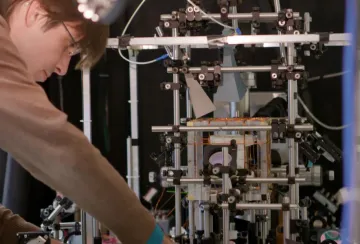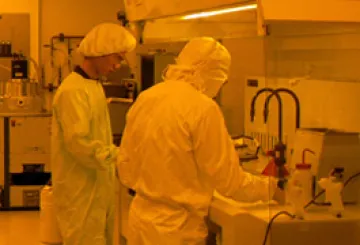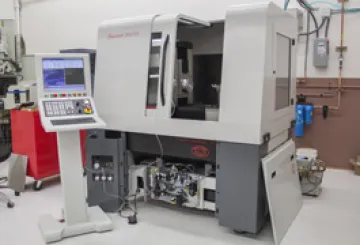OSC faculty members are involved in a myriad of multidisciplinary and multi-institutional programs — including organizations dedicated to increasing the speed of the Internet, to building a better solar cell and to finding newer and more accurate ways to detect and diagnose cancer. OSC also provides facilities that are available to all campus researchers as well as external, non-sponsored research customers.
Center for Quantum Networks (CQN)
The National Science Foundation awarded a five-year, $26 million grant to establish an Engineering Research Center based at the University of Arizona. Entitled the Center for Quantum Networks, CQN is a multi-institutional research effort consisting of the University of Arizona (lead) and its ten partner institutions and twenty-eight principal investigators. This powerful team will research the foundations of the quantum internet, aiming to revolutionize how humankind computes, communicates, and senses the world. "The transformation of today's internet through quantum technology will spur entirely new tech industries and create an innovation ecosystem of quantum devices and components, service providers and applications. The potential impact of CQN is so immense, it is almost incalculable," notes Saikat Guha, CQN director and principal investigator and associate professor of optical sciences.

OSC Micro/Nano Fabrication Cleanroom
The OSC Micro/Nano Fabrication Cleanroom enables research in a dust-free, clean environment, utilizing state of the art lithography and deposition equipment. The Cleanroom provides support for the University community, including researchers in the College of Science and College of Engineering. Additionally, the Cleanroom welcomes industry partners dedicated to research and development of solar, telecom, electronic and other technologies.

Precision Freeform Optics Design, Fabrication and Testing Facility
The facility of Precision Freeform Optics Design, Fabrication, and Testing Facility was established in 2015, with the support from the College of Optical Sciences, University of Arizona (TRIF), and the National Institute of Health (NIH). It provides optical and opto-mechanical design; system integration; fabricating precision diamond turning and molding; testing surface shape and quality and testing geometrical dimension.

